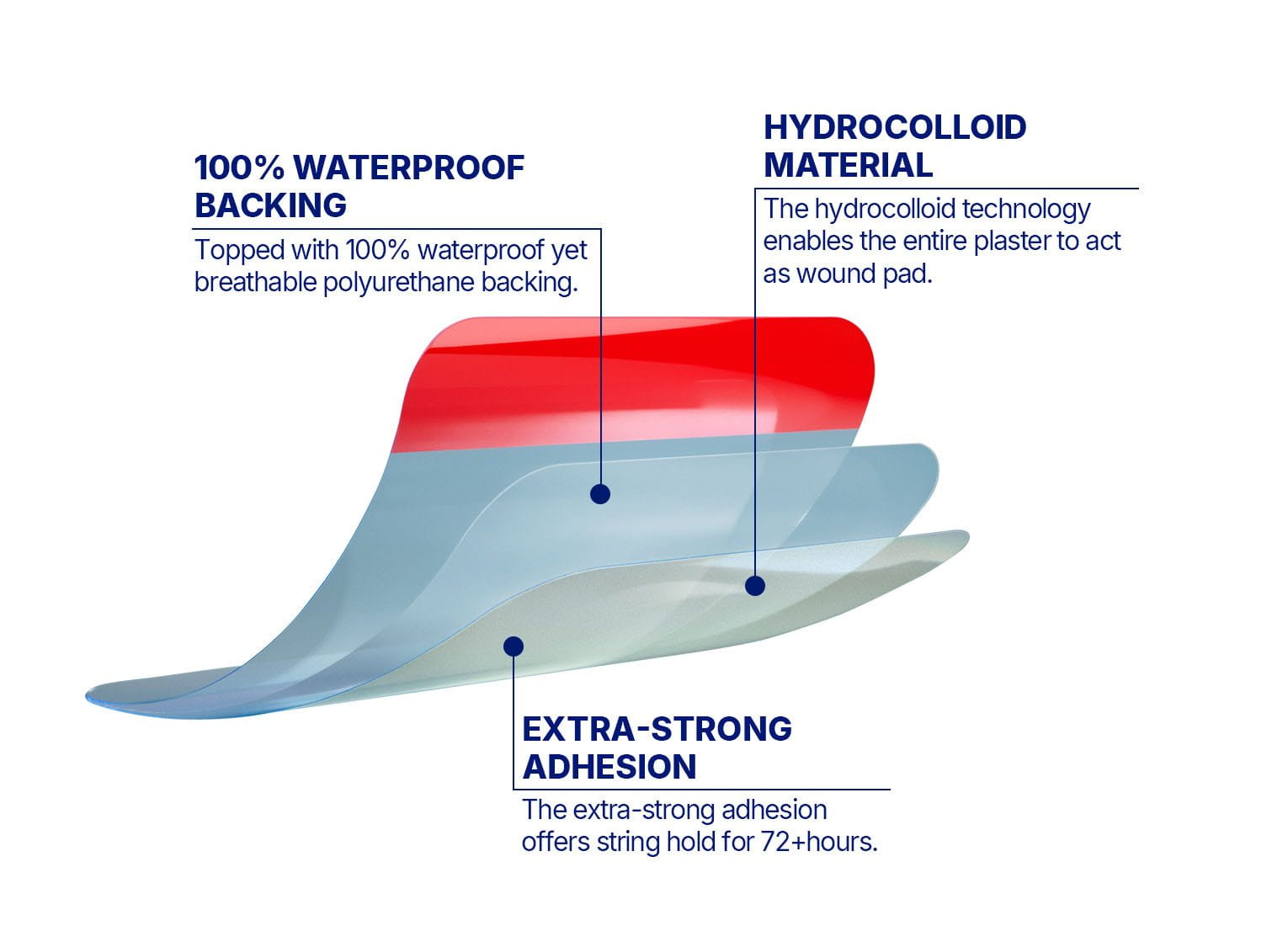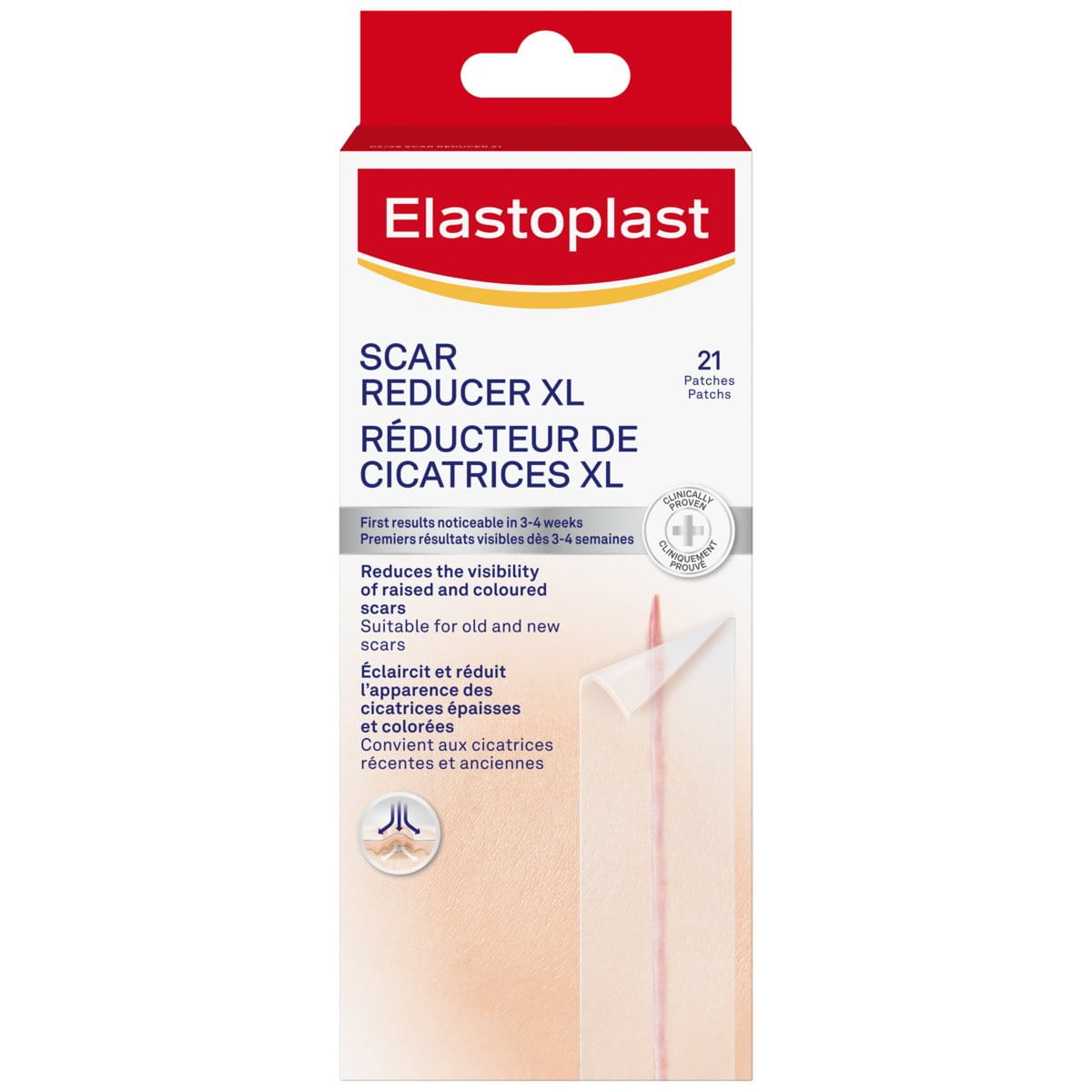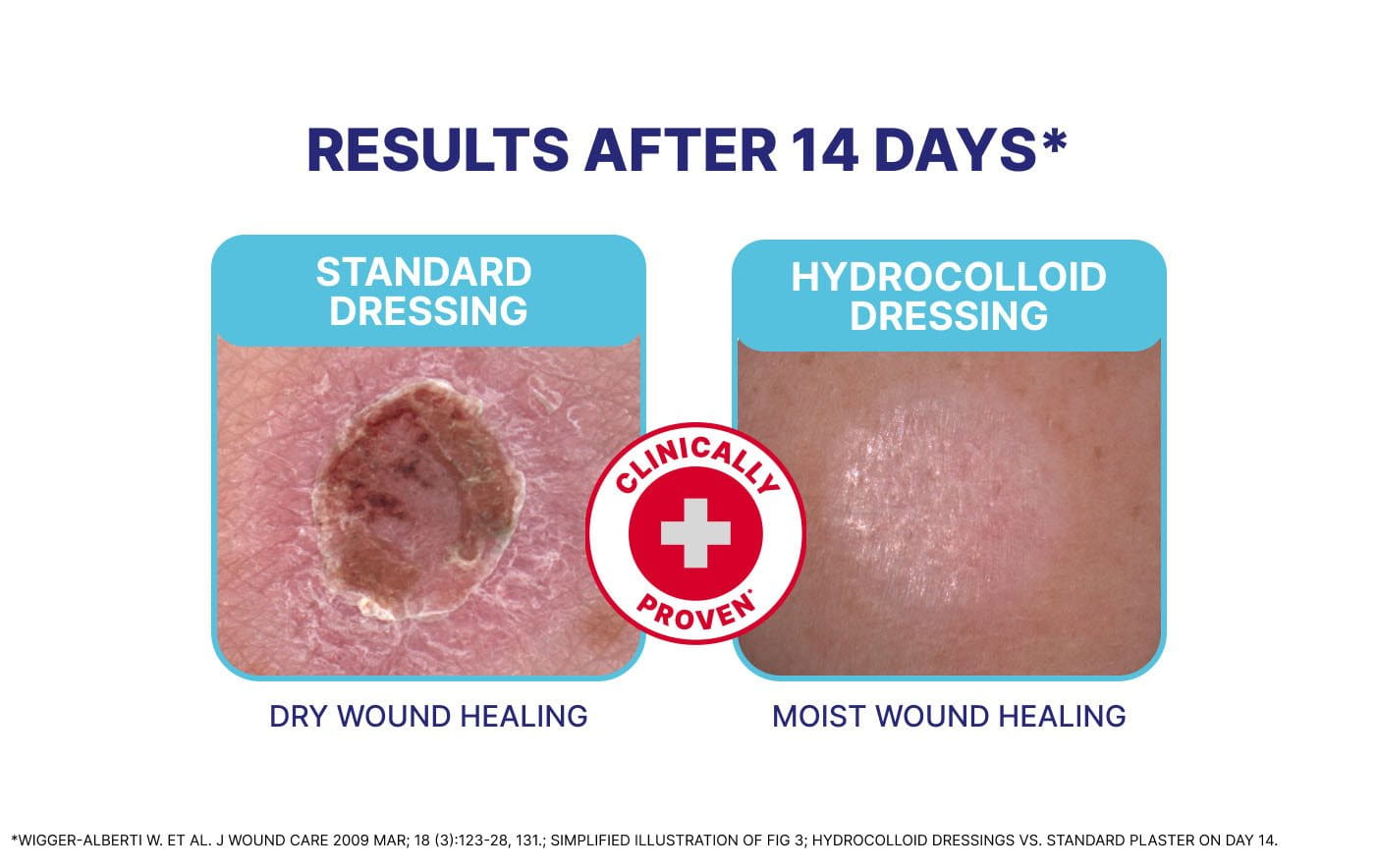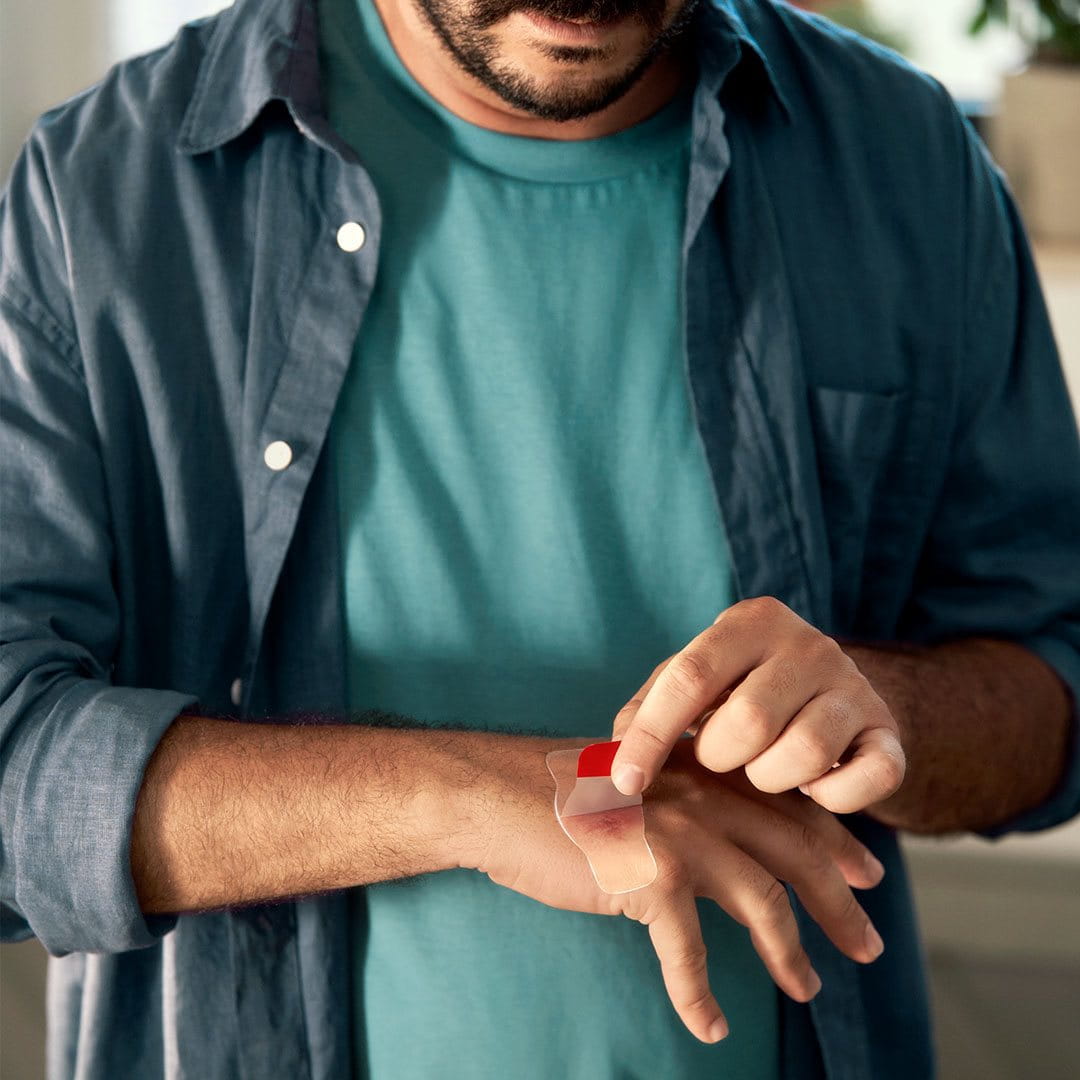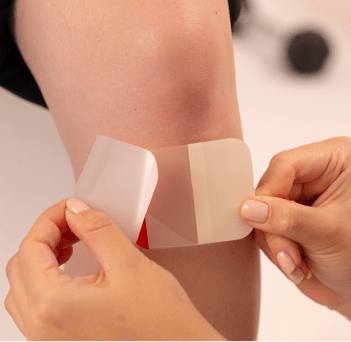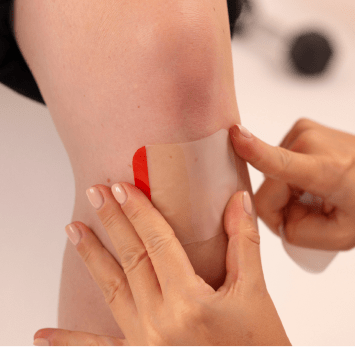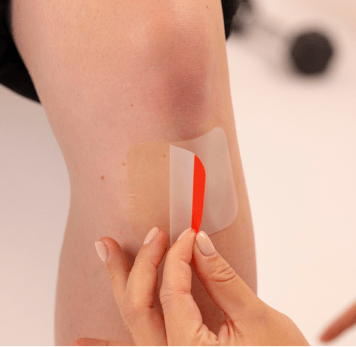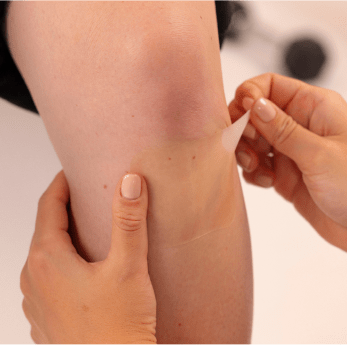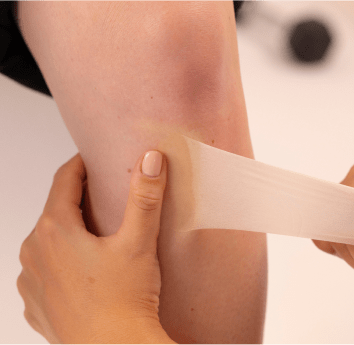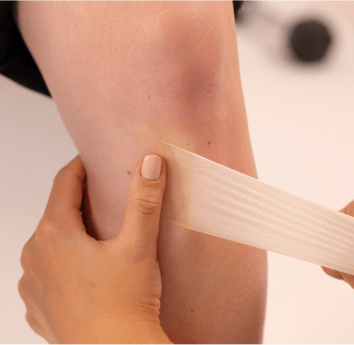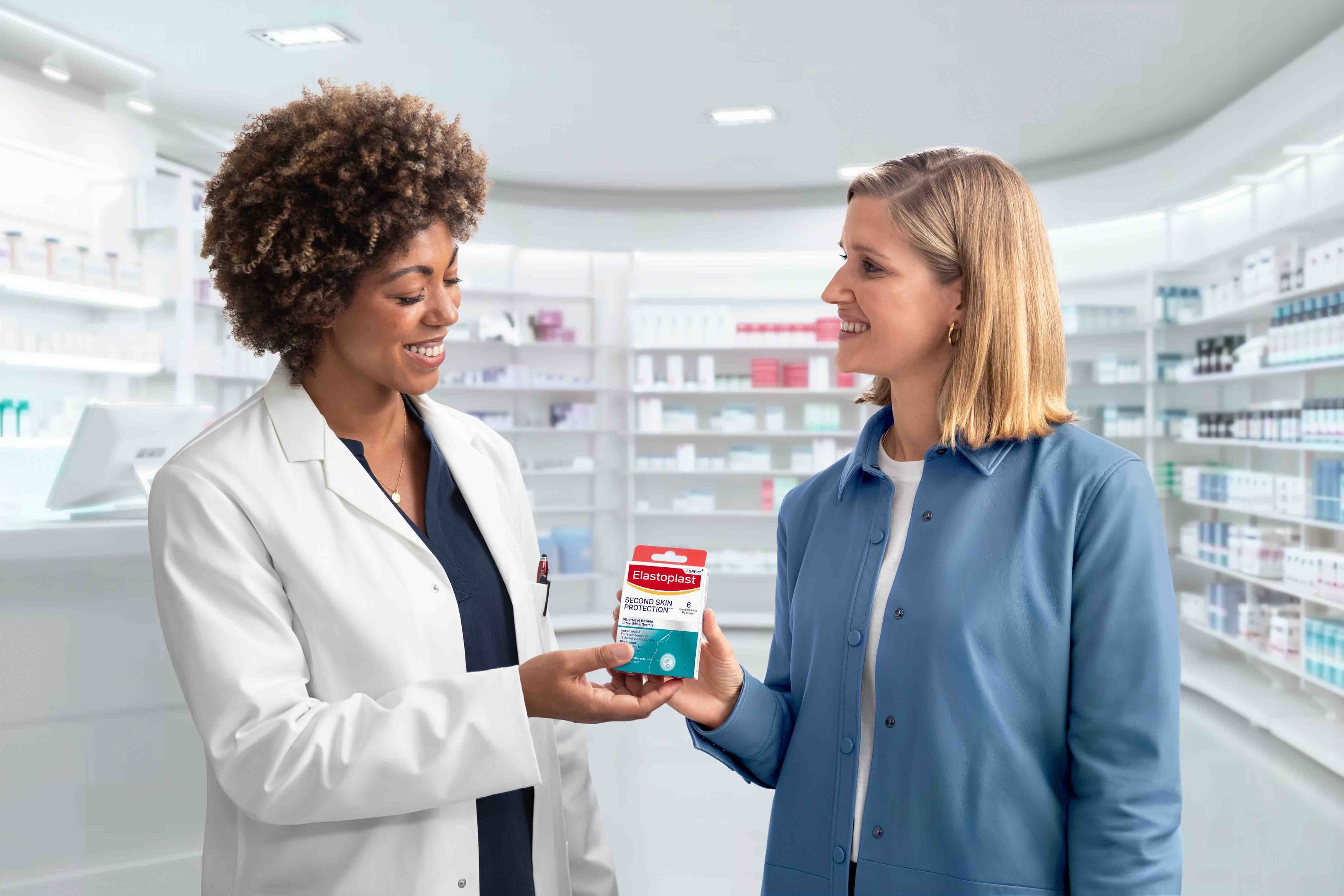ADVANCED HYDROCOLLOID TECHNOLOGY
FOR EVERYDAY WOUNDS
What is hydrocolloid technology?
The Elastoplast Healing Capsule Technology – also known as hydrocolloid technology – contains macromolecules which are able to absorb liquids like water or wound fluid, they swell and form a gel. In Second Skin Protection these Hydrocolloid particles are dispersed in an adhesive mass which gives elasticity and stickiness to the plaster.
How is the bandage composed?
The composition of hydrocolloid dressings contributes to their remarkable properties. Elastoplast Second Skin Protection features two distinct layers. The inner layer contains the hydrocolloid particles and also acts as a wound pad, while the outer layer, crafted from polyurethane, is flexible and 100% waterproof; then covered by a support foil for ease of application.
